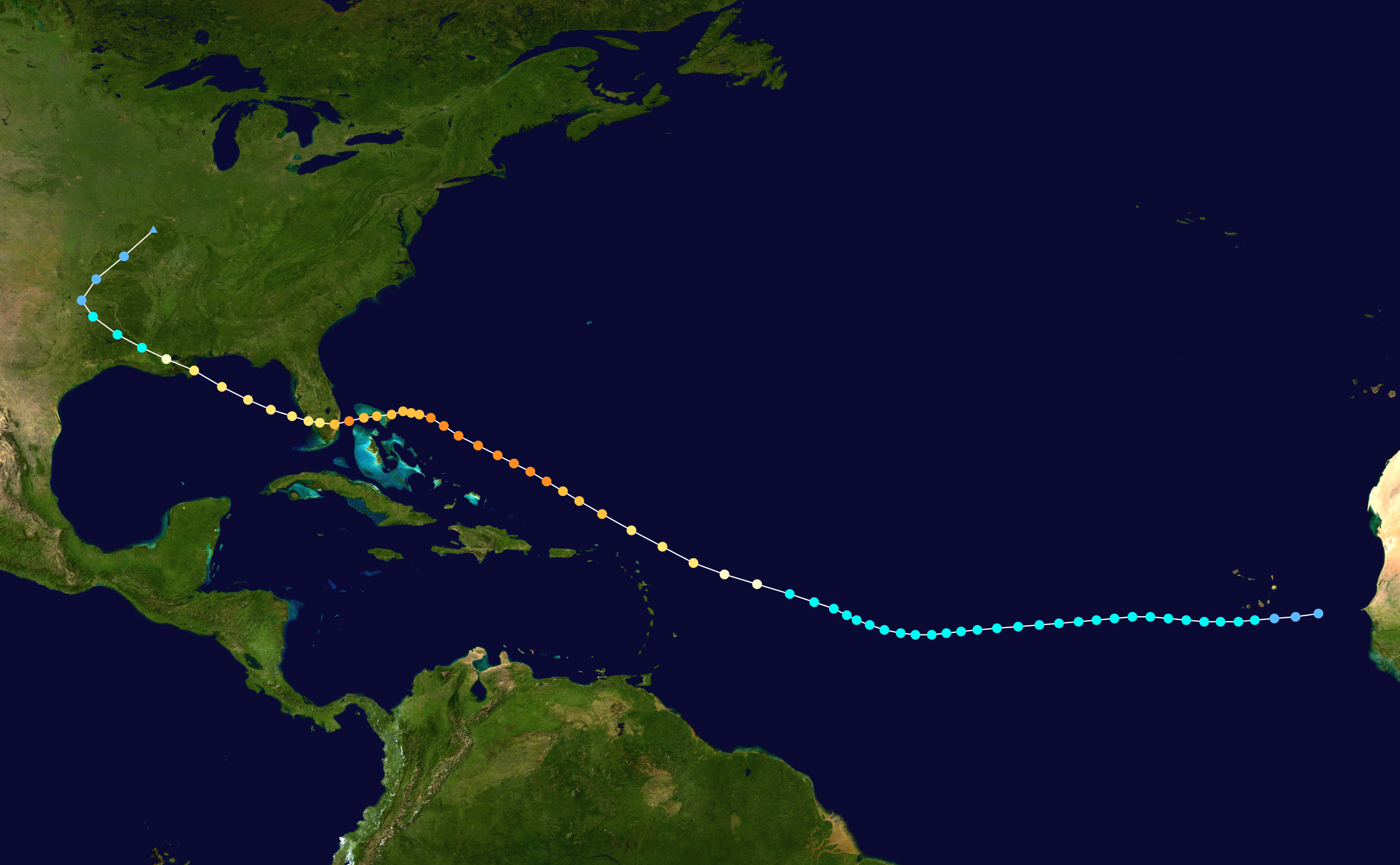1947 Fort Lauderdale hurricane
1947 Fort Lauderdale Hurricane[edit | edit source]
The 1947 Fort Lauderdale Hurricane was a powerful tropical cyclone that struck the southeastern United States in September 1947. It was the first major hurricane to make landfall in the Fort Lauderdale area since the devastating 1926 Miami hurricane. The storm caused significant damage and loss of life, particularly in Florida.
Meteorological history[edit | edit source]
- The 1947 Fort Lauderdale Hurricane originated from a tropical wave that moved off the coast of Africa on September 9, 1947. As it moved westward across the Atlantic Ocean, the system gradually organized and developed into a tropical depression on September 15. Over the next few days, the depression intensified and became a tropical storm on September 16, receiving the name "Fort Lauderdale" due to its projected path towards the Florida coast.
- As the storm approached the Bahamas, it rapidly intensified into a Category 4 hurricane on the Saffir-Simpson Hurricane Wind Scale. On September 18, the hurricane made landfall near Fort Lauderdale, Florida, with maximum sustained winds of 145 mph (230 km/h). The storm then moved inland, weakening as it crossed the Florida peninsula and eventually dissipating over the Gulf of Mexico on September 20.
Impact[edit | edit source]
- The 1947 Fort Lauderdale Hurricane caused widespread destruction and loss of life along its path. In Fort Lauderdale, the storm surge reached a record height of 18 feet (5.5 meters), flooding coastal areas and causing extensive damage to buildings and infrastructure. The strong winds also uprooted trees, downed power lines, and destroyed homes and businesses.
- Throughout Florida, the hurricane resulted in at least 51 fatalities and caused millions of dollars in property damage. The storm also caused significant agricultural losses, particularly to the citrus industry, which was a major economic driver in the region. In addition, the hurricane disrupted transportation and communication systems, further exacerbating the impact on affected communities.
Response and aftermath[edit | edit source]
- In the aftermath of the 1947 Fort Lauderdale Hurricane, local and federal authorities launched extensive relief and recovery efforts. Emergency shelters were set up to provide temporary housing for displaced residents, and medical teams were dispatched to provide healthcare services to those in need. The National Guard and other military units were also deployed to assist with search and rescue operations, debris removal, and restoration of essential services.
- The devastation caused by the hurricane prompted significant improvements in disaster preparedness and response in the Fort Lauderdale area. The construction of stronger buildings, implementation of stricter building codes, and improved storm forecasting and communication systems were among the measures taken to mitigate the impact of future storms.
See also[edit | edit source]
References[edit | edit source]
External links[edit | edit source]
- National Hurricane Center - 1947 Fort Lauderdale Hurricane Report
- National Weather Service - 1947 Fort Lauderdale Hurricane Information
| This article is a stub. You can help WikiMD by registering to expand it. |
{{This 'hurricane season' related article is a stub. You can help WikiMD by expanding it.}}
Lua error in package.lua at line 80: module 'strict' not found.
Search WikiMD
Ad.Tired of being Overweight? Try W8MD's physician weight loss program.
Semaglutide (Ozempic / Wegovy and Tirzepatide (Mounjaro / Zepbound) available.
Advertise on WikiMD
|
WikiMD's Wellness Encyclopedia |
| Let Food Be Thy Medicine Medicine Thy Food - Hippocrates |
Translate this page: - East Asian
中文,
日本,
한국어,
South Asian
हिन्दी,
தமிழ்,
తెలుగు,
Urdu,
ಕನ್ನಡ,
Southeast Asian
Indonesian,
Vietnamese,
Thai,
မြန်မာဘာသာ,
বাংলা
European
español,
Deutsch,
français,
Greek,
português do Brasil,
polski,
română,
русский,
Nederlands,
norsk,
svenska,
suomi,
Italian
Middle Eastern & African
عربى,
Turkish,
Persian,
Hebrew,
Afrikaans,
isiZulu,
Kiswahili,
Other
Bulgarian,
Hungarian,
Czech,
Swedish,
മലയാളം,
मराठी,
ਪੰਜਾਬੀ,
ગુજરાતી,
Portuguese,
Ukrainian
Medical Disclaimer: WikiMD is not a substitute for professional medical advice. The information on WikiMD is provided as an information resource only, may be incorrect, outdated or misleading, and is not to be used or relied on for any diagnostic or treatment purposes. Please consult your health care provider before making any healthcare decisions or for guidance about a specific medical condition. WikiMD expressly disclaims responsibility, and shall have no liability, for any damages, loss, injury, or liability whatsoever suffered as a result of your reliance on the information contained in this site. By visiting this site you agree to the foregoing terms and conditions, which may from time to time be changed or supplemented by WikiMD. If you do not agree to the foregoing terms and conditions, you should not enter or use this site. See full disclaimer.
Credits:Most images are courtesy of Wikimedia commons, and templates, categories Wikipedia, licensed under CC BY SA or similar.
Contributors: Prabhudeva

